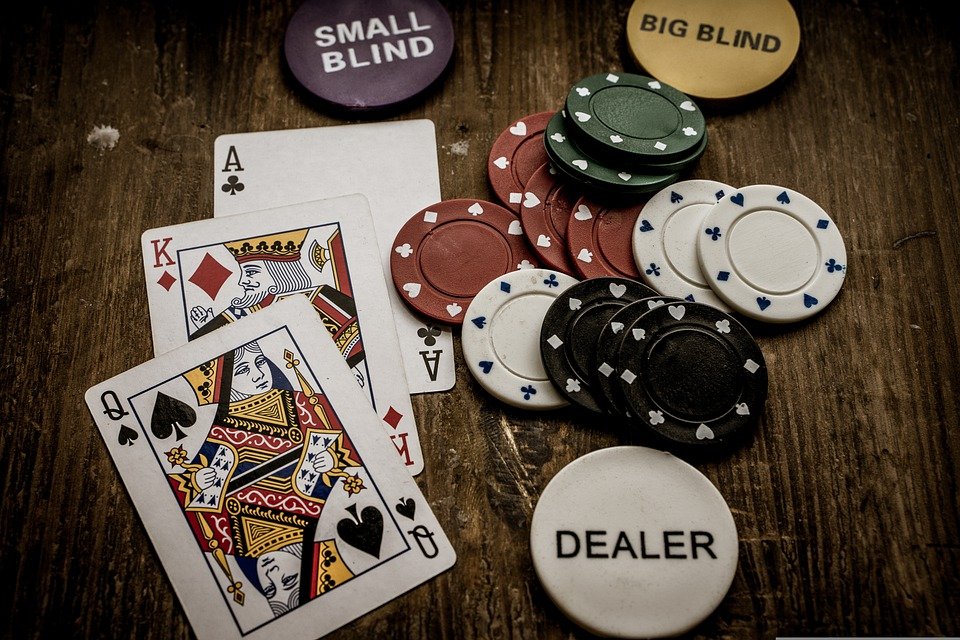
Many people overestimate how much luck matters in poker. The truth is, your luck matters far less than strategy and skill. Luck is short-term; even the best or worst luck will change after a few games. The best poker players realize that poker is not a get-rich-quick scheme and is not gambling. It is a grind that requires many hours of dedication and hard work. Poker players focus on consistently making the right decisions and ignoring the results of individual hands. This allows them to earn a profit over time, even with streaks of bad luck.
Making these good decisions is the foundation of poker strategy. Another reason luck is not that substantial: A bad hand does not automatically lose you money, and vice versa. Your opponents cannot see your cards, so they never know the true strength of your hands until the showdown. That is why aggressive play is optimal since you have another way to win (getting your opponents to fold) besides waiting until the showdown. Another part of poker that most players overlook is playing with a good hand. You may think the game is much easier with a good hand, but you still need to have a strategy to win. People regularly make mistakes with good hands, which can be game-losing. This poker guide will teach you how to properly play strong hands, focusing on pocket aces and common mistakes with them.

Pocket Aces
Strong starting hands in poker have high-ranked cards and either pocket pairs (two hole cards of the same rank) or suited connectors (consecutive cards of the same suit). The top five starting hands are generally agreed to be: Two aces, two kings, two queens, two jacks, and finally, ace and king of the same suit. As you can see, pocket aces are the best starting hand in poker. Aces are at the top of the normal card ranking, and having a pocket pair is a notable advantage. Pocket aces also act as blockers, meaning your opponents are less likely to get aces since you already have two of them.
Be aggressive pre-flop
When beginners get a hand this good, many of them will want to disguise the fact they have a good hand. That may lead to them limping into the pot, which is calling the blind instead of raising or folding. While it may sound like a good idea, this is a horrible course of action with a hand this strong. Pocket aces lose to strong five-card combinations like flushes and straights, so you let your opponents see the flop for free by limping in. You want to pressure their drawing hands with aggressive bets and raises.
Allowing more people to see the flop by limping is also detrimental, as the more players there are in the pot, the higher the chance of one of them having a great five-card hand. Another beginner mistake is limping in, then re-raising afterward. This is a glaring indicator that your hand is strong and will cause many players to fold and not build the pot. Raising shows strength, but it does not give away exactly how strong your hand is, especially if you are a loose player.

Avoid post-flop slow playing
Slow playing is the term for attempting to disguise the strength of your hand by playing passively with checks and only small bets. That is not a good idea post-flop either. You never want to give your opponents the chance to hit their outs, especially if the board looks primed for a straight or flush. Solid and aggressive bets are critical, particularly continuation bets and check-raises. Continuation bets are when you bet on the flop after making the last aggressive action pre-flop, putting lots of pressure on your opponents. Check-raising is a deceptive play wherein you check, wait for someone after you to bet, then raise them. This eliminates your positional disadvantage and traps your opponent who already put a bet into the pot. Be sure to stay away from check-raising if your opponent wants a draw.
Weird bet sizing
Some players understand the need to bet with pocket aces but often bet larger than usual. That isn’t a mistake, but skilled players can recognize your betting patterns. If you bet larger with your best hands, you may reveal that your hand is strong. Maintaining a consistent bet size will allow you to remain ambiguous and help you get away with more bluffs.
Not folding pocket aces
Sometimes, folding is necessary. It feels terrible when you get a bad beat, but folding and cutting your losses is part of the game. Folding with pocket aces is never easy, but you will want to consider a few factors. The first and most prominent one is board texture. Pocket aces are strong but have little draw potential. If the board has many consecutive cards or cards of the same suit, that is a wet board and one you should be wary of. The second factor is the number of opponents. As previously mentioned, multi-way pots are inherently volatile. More players devalue hands without strong five-card combos, and pocket aces are no exception. Finally, you will want to consider your opponents and how they play. If a tight player starts betting on a wet board texture, you may be out of luck.

Putting knowledge into practice
We hope this article taught you how to make the most out of good poker hands. Pocket aces are strong, but it takes a skilled player to use them to their full potential. To learn and improve, you should play online poker on sites like GGPoker, the world’s largest poker room. Online poker offers the ability to play from anywhere, at any time, and even multiple games simultaneously. GGPoker, in particular, offers free poker tracking software to all its users. This software is a staple in the poker community and is typically paid. Sign up for free at GGPoker today!
 Skip to content
Skip to content





